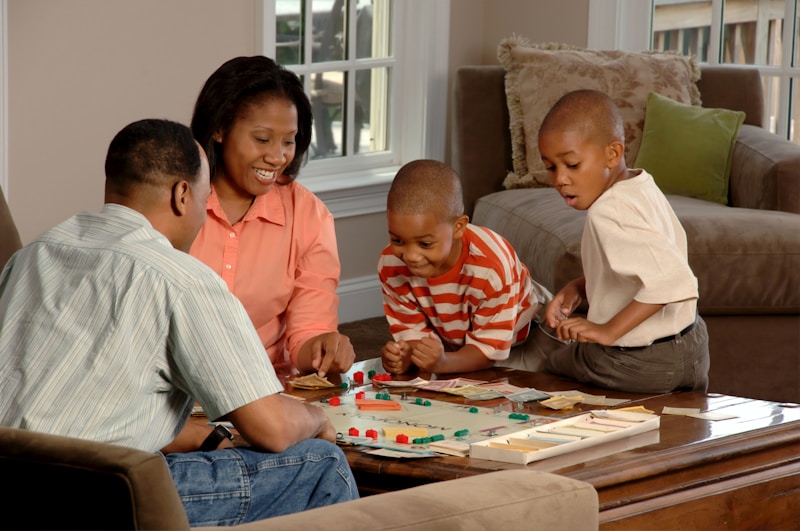43 Questions
Which sense is considered the most researched area in infant perception?
Vision
At what age do infants reach the same visual acuity as adults?
6 years
What is depth perception?
The ability to judge distance and spatial relationships of objects
What is the monocular depth cue used by a 7-month-old baby to gauge the distance of a toy?
Relative size
Why are faces crucial for social interactions?
They are socially significant stimuli
At what age do infants start showing a preference for looking at faces?
A few days old
What is perceptual narrowing?
The ability to distinguish familiar stimuli
What happens to an infant's ability to differentiate between different monkey faces after 6 months of exposure to only human faces?
It decreases
What is the absolute threshold in auditory perception?
The minimum sound level to detect sound
What do newborns prefer when it comes to auditory stimuli?
Their mother's voice
Which of the following best defines sensation?
The process of detecting information from the environment and transmitting it to the brain
What is an example of sensation?
Feeling warmth when touching a heated object
What is the main challenge in investigating infant perception?
Understanding what babies can perceive
Which sense is mentioned as a crucial aspect of infant perception?
Vision
What is the procedure for preferential-looking tests?
Presenting two stimuli and measuring the infant's attention
What does renewed interest or attention to a new stimulus indicate in habituation-recovery tests?
Recognition of a difference from the previous stimulus
What are the measurement methods for habituation-recovery tests?
Heart rate and skin conductance
What is the adaptation of habituation-recovery tests that utilizes a pacifier?
Habituation-Recovery with Pacifier
Which of the following is NOT mentioned as a method of testing infant perception?
Overt Behavior
What is the purpose of habituation-recovery tests?
To recognize a difference from the previous stimulus
Which of the following is true about depth perception in infants?
Infants rely on monocular depth cues to assess distance.
What is acuity in the context of depth perception?
The clarity or sharpness of vision.
What is face perception?
The ability to recognize, interpret, and be drawn towards faces.
What is motion tracing?
The ability to follow or trace moving objects.
What are saccades?
The rapid eye movements from one point to another.
What do infants prefer when it comes to musical sounds?
Consonant sounds
What is a characteristic of infant visual acuity?
It develops over time
What is a strong indicator of infants' inherent focus on faces?
Their ability to recognize their mother's face
What percentage of their waking time do infants spend observing faces?
Around 25-50%
What do infants improve as their visual system develops?
Their ability to follow or trace moving objects
What are the two main methods of testing infant perception?
The two main methods of testing infant perception are preferential-looking tests and habituation-recovery tests.
What is the purpose of preferential-looking tests?
The purpose of preferential-looking tests is to measure the attention infants give to different stimuli and interpret their preferences or recognition of differences.
What does renewed interest or attention to a new stimulus indicate in habituation-recovery tests?
Renewed interest or attention to a new stimulus in habituation-recovery tests indicates recognition of a difference from the previous stimulus.
What is perceptual narrowing in the context of infant perception?
Perceptual narrowing refers to a developmental process characterized by a diminished ability to distinguish among less frequently-encountered stimuli. It is the process by which infants become more specialized in distinguishing familiar stimuli and less adept at distinguishing unfamiliar ones.
What is the relative threshold in auditory perception?
The relative threshold in auditory perception is the minimum difference in loudness or pitch for an infant to detect a difference.
What are some examples of listening preferences in infants?
Some examples of listening preferences in infants include preferring their mother's voice over a stranger's voice, showing a liking for 'baby talk' or motherese over regular adult speech, and preferring their native language over foreign languages.
What are depth perception and acuity in the context of infant perception? Provide examples.
Depth perception refers to the ability to judge the spatial relationship of objects and their distance from us. Acuity, on the other hand, refers to the clarity or sharpness of vision. An example of depth perception in infants is their use of monocular depth cues like relative size to assess the distance of a toy. An example of acuity is their ability to distinguish between objects at varying distances.
What is face perception and why is it important for infants?
Face perception is the ability to recognize, interpret, and be drawn towards faces. It is important for infants because they spend a significant amount of their waking time observing faces and show a clear preference for their mother's face. Face perception is also crucial for social interactions.
What is motion tracing and how does it improve in infants?
Motion tracing refers to the ability to follow or trace moving objects, such as a moving face, with one's eyes. Infants improve their ability to trace motion as their visual system develops.
What are saccades and how do infants use them when observing faces?
Saccades are rapid eye movements from one point to another. When infants observe faces, they often make saccades between different facial features, such as from the eyes. This helps them in their preferential looking and focusing on specific parts of the face.
True or false: Infants show a clear preference for dissonant musical sounds.
False
True or false: Depth perception allows us to judge the spatial relationship of objects and their distance from us.
True
True or false: Infants improve their ability to trace motion as their visual system develops.
True
Study Notes
Infant Perception
- Vision is considered the most researched area in infant perception.
Visual Acuity
- Infants reach the same visual acuity as adults around 4-6 months old.
- Visual acuity refers to the sharpness of vision, or the ability to see objects clearly.
Depth Perception
- Depth perception is the ability to judge the spatial relationship of objects and their distance from us.
- It is crucial for infant perception as it helps them understand their environment.
- Acuity in the context of depth perception refers to the ability to see objects clearly and judge their distance.
Face Perception
- Faces are crucial for social interactions as they convey emotions and intentions.
- Infants start showing a preference for looking at faces around 1-2 months old.
- Face perception is important for infants as it helps them develop social skills and understand human interactions.
Habituation-Recovery Tests
- Habituation-recovery tests are used to study infant perception by measuring their response to repeated stimuli.
- Renewed interest or attention to a new stimulus indicates that the infant has detected a change or novelty.
- Measurement methods for habituation-recovery tests include heart rate, sucking rate, and looking time.
Preferential-Looking Tests
- Preferential-looking tests are used to study infant perception by presenting two stimuli simultaneously.
- The procedure involves presenting two stimuli, measuring the infant's looking time, and identifying which stimulus they prefer.
Sensation and Perception
- Sensation refers to the detection of physical stimuli, such as light or sound.
- An example of sensation is the detection of a loud noise.
- Perception refers to the interpretation of sensory information, such as recognizing a face.
Challenges and Methods
- Investigating infant perception is challenging due to their limited communication skills.
- Methods for testing infant perception include habituation-recovery tests, preferential-looking tests, and others.
Auditory Perception
- Newborns prefer higher-pitched sounds, such as female voices, when it comes to auditory stimuli.
- The absolute threshold in auditory perception refers to the minimum intensity of sound that can be detected.
- Infants prefer consonant musical sounds over dissonant ones.
Other Concepts
- Perceptual narrowing refers to the process by which infants become specialized in recognizing stimuli they are frequently exposed to.
- Motion tracing refers to the ability to track moving objects, which improves as the visual system develops.
- Saccades refer to rapid eye movements between fixation points, which infants use to observe faces.
- Infants spend around 40-50% of their waking time observing faces, indicating their inherent focus on faces.
Test your knowledge of perception with this quiz! Learn about the definitions of sensation and perception, and how they relate to our understanding of the world around us. Challenge yourself with examples and see how well you can interpret sensory input.
Make Your Own Quizzes and Flashcards
Convert your notes into interactive study material.
Get started for free



